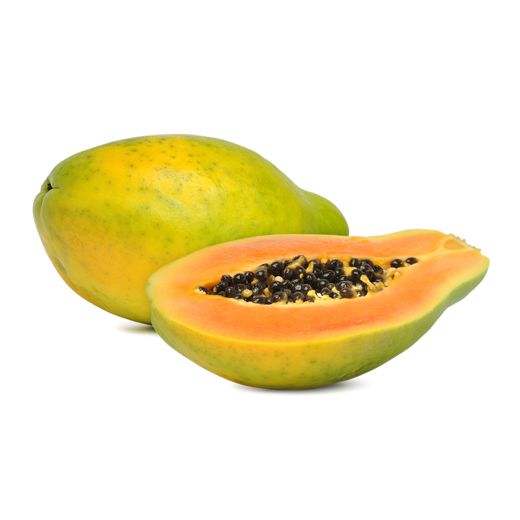How to Find Us?

Papaya
Originally from southern Mexico, Central America, and northern South America, the papaya is now cultivated in most tropical countries. In cultivation, it grows rapidly, fruiting within three years. It is, however, highly frost-sensitive, limiting its production to tropical climates.
Papayas, raw
Nutritional value per 100 g (3.5 oz)
Energy 179 kJ (43 kcal)
Carbohydrates
10.82 g
Sugars 7.82 g
Dietary fiber 1.7 g
Fat
0.26 g
Protein
0.47 g
Vitamins
Vitamin A equiv.
beta-carotene
lutein zeaxanthin
(6%) 47 μg
(3%) 274 μg
89 μg
Thiamine (B1) (2%) 0.023 mg
Riboflavin (B2) (2%) 0.027 mg
Niacin (B3) (2%) 0.357 mg
Pantothenic acid (B5)
(4%) 0.191 mg
Vitamin B6 (3%) 0.038 mg
Folate (B9) (10%) 38 μg
Vitamin C (75%) 62 mg
Vitamin E (2%) 0.3 mg
Vitamin K (2%) 2.6 μg
Trace metals
Calcium (2%) 20 mg
Iron (2%) 0.25 mg
Magnesium (6%) 21 mg
Manganese (2%) 0.04 mg
Phosphorus (1%) 10 mg
Potassium (4%) 182 mg
Sodium (1%) 8 mg
Zinc (1%) 0.08 mg
Other constituents
Lycopene 1828 µg
Units
μg = micrograms • mg = milligrams
IU = International units
Percentages are roughly approximated using US recommendations for adults.
SOURCE: USDA NUTRIENT DATABASE








